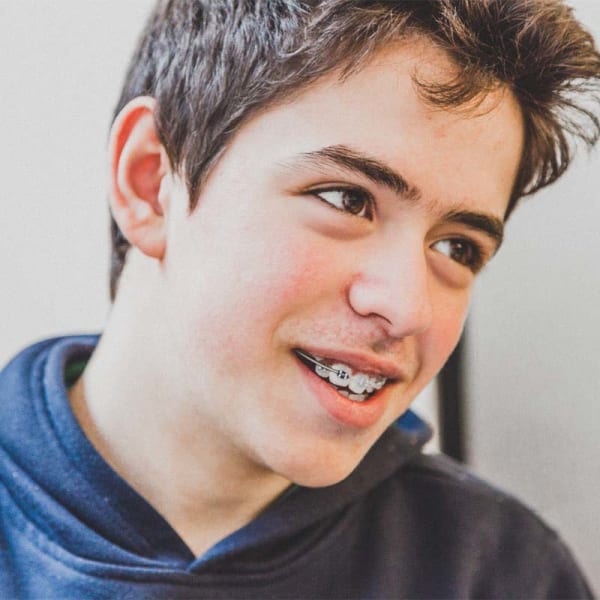Tween and Teen Treatment
Orthodontic Treatment Options to Fit Your Lifestyle
Treating orthodontic issues in tween and teen years gives you a smile you can love for a lifetime.
Topics on This Page:

Missed Screening Earlier? Not to Worry!
Are you a tween or teen (or the parent of one) who didn’t get screened for orthodontic issues as a younger child? Don’t worry, there is still time!
The jawbone tissue is still soft and responsive, making it easier and more efficient to reposition teeth to their correct placement.

Signs Indicating You May Need Adolescent Orthodontic Care
Orthodontic problems seen in adolescence are typically caused by a variety of factors, including inherited or congenital conditions, mouth or jaw injuries or repetitive oral habits like thumb-sucking when you were younger or chewing on pens, pencils or other hard items.
If you have any of the following, you would benefit from Dr. Reichard’s free initial assessment:
- Early or late loss of baby teeth; loss of baby teeth typically starts around age 5, with all permanent teeth erupted around age 13
- A history of thumb-sucking, particularly after the age of 5, or chewing on hard objects like pens or pencils
- Missing teeth
- A tooth in the wrong spot
- Continued complaints of tooth or jaw discomfort
- Difficulty biting or chewing
- Mouth breathing
- Speech impediments like slurring of speech or a lisp
- Teeth appear too crowded
- Teeth appear with too much space in between them
- The middle of your upper and lower teeth are not aligned
- Teeth protrude away from each other or look crooked
- When closing the jaw, top and bottom teeth do not come together
- Upper front teeth excessively overlap the lower front teeth
- Lower jaw sticks out or lower front teeth sit in front of upper front teeth
- Jaw shifts laterally or sideways when closing or opening mouth
- Frequently biting the inside of your mouth
- Jaw clicks or grinds, or you experience pain, when you open or close your mouth
- Teeth appear out of proportion with your mouth or jaw
- Embarrassed or concerned about your smile
Phase Two Treatment for Tweens and Teens
Rachel E Reichard Orthodontics may recommend pediatric patients a two-phase treatment plan to straighten teeth and create a functional bite. Phase one treatment, also called interceptive treatment, is foundational and geared to children ages 7-10. It prepares the teeth and jaw for normal dental development. After a resting phase to let permanent teeth naturally erupt, most of these patients will progress to phase two.
If you didn’t catch phase one treatment, that’s okay; Dr. Reichard will assess and recommend a phase two plan that’s right for you.

Phase two treatment employs braces, Invisalign or clear aligner trays on permanent teeth, typically both top and bottom teeth. As your teeth, jaw and facial structure are still maturing, Dr. Reichard carefully monitors your growth to ensure your treatment results in a functional and balanced bite and smile. Phase two treatment is typically geared to 10-15 year olds. It takes, generally speaking, about 12-30 months to complete.
Patients who received phase one treatment typically have an easier and shorter phase two treatment. Once the braces come off, most adolescents wear a retainer to keep your well-earned smile looking like new.
Our practice offers multiple types of braces treatments for tweens and teens, such as mini traditional (steel) braces, ceramic (clear) braces and gold braces. We also offer Invisalign Teen and clear aligners. We can help you select the best option based on your preferences for style, care and budget.
Feel Better and Show off Your Great Smile
Adolescent treatment from Dr. Reichard straightens teeth and resolves jaw/bite problems. Many dental problems become harder and more costly to treat if not treated earlier, so it’s important to address any issues as soon as you notice them.
For example, in your tween and early teen years, your jawbone tissue is soft and responsive to the pressure braces exert on your teeth. But, as you exit your teen years, your jawbone hardens and stops growing. This increases your chances of needing more costly and invasive treatments like tooth extraction, oral surgery or even jaw surgery to help correct orthodontic issues as an adult. As another example, crowded teeth can be challenging to brush and floss properly, increasing your chances of cavities and gum disease while you are still young.